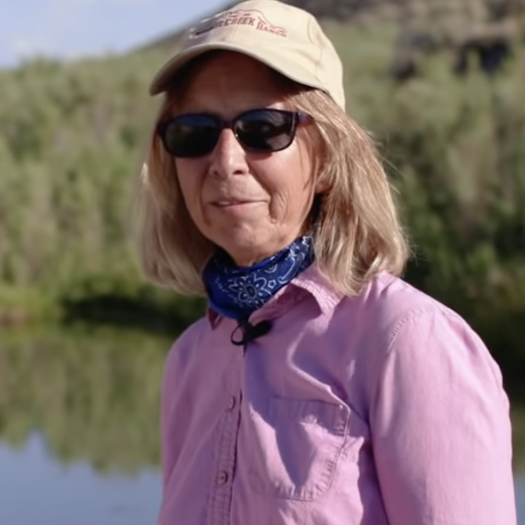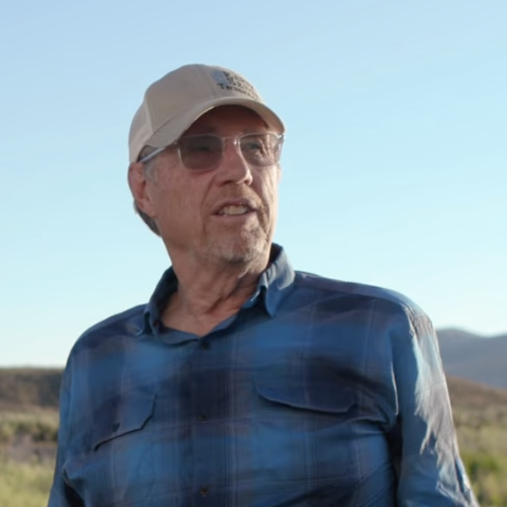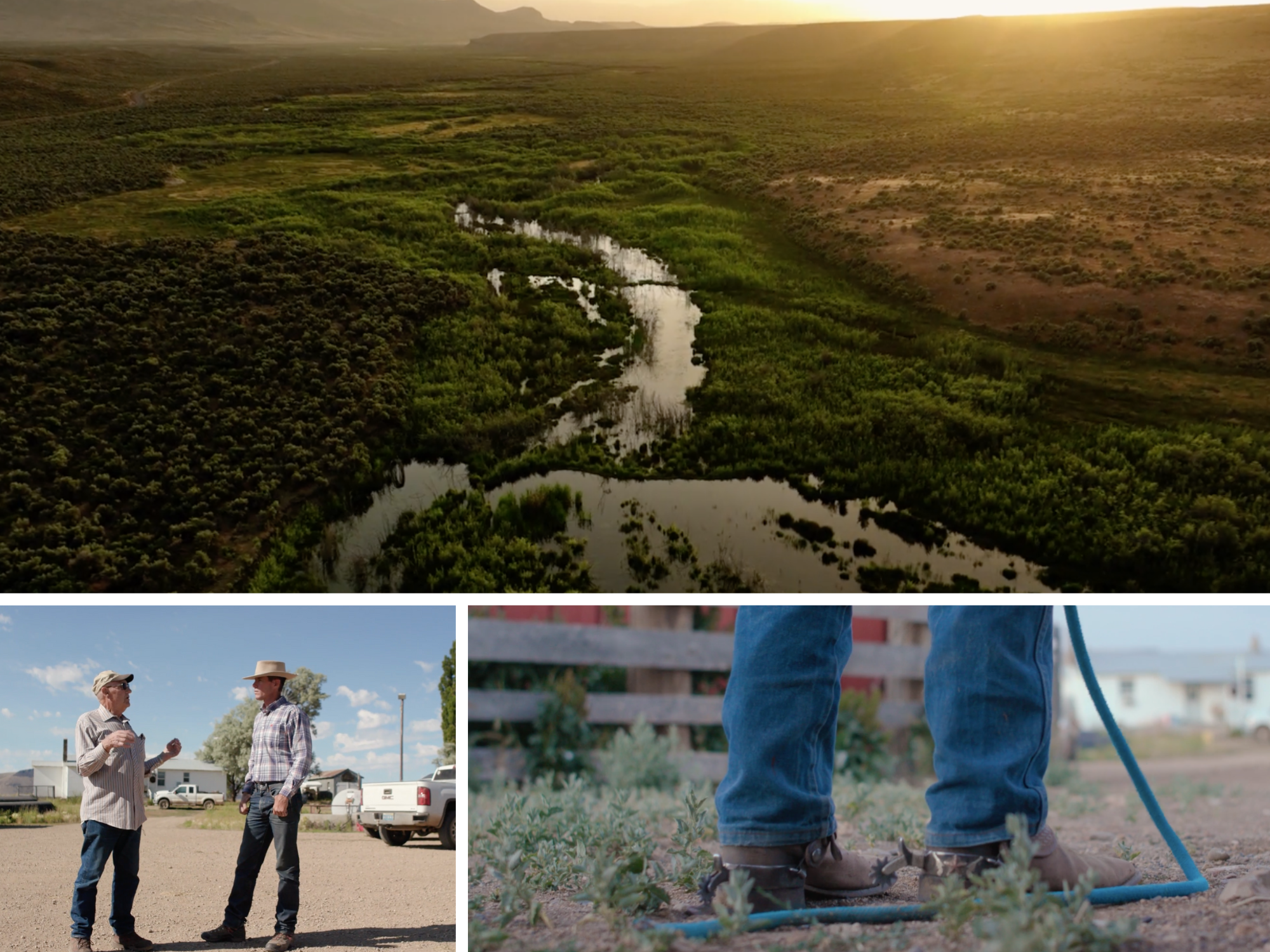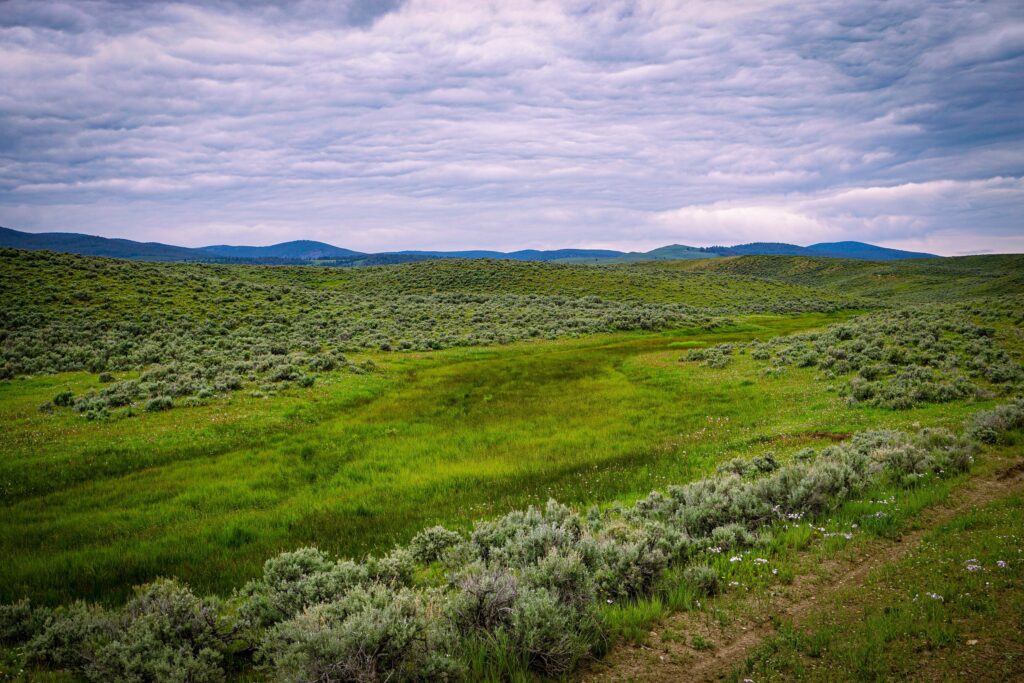
The Humboldt Ranch encompasses more than 140 miles of streams and over 350,000 acres of mixed public lands administered by the Bureau of Land Management (BLM) and private lands owned by Nevada Gold Mines. Collectively, these lands support important habitat for an abundance of wildlife including Nevada’s native Lahontan cutthroat trout. Historically, cattle and sheep grazed on streams and surrounding uplands throughout the growing season every year for over a century. Eventually, soil-stabilizing plants that grow naturally in the area began to decline and miles of willow-lined stream channels became miles of gullies.
Based on a vision that combines economic viability with environmental sustainability, Gregg Simonds, mentor and founding partner of the Humboldt Ranch, implemented a ranch-wide grazing program based on managing livestock for plant recovery. Rather than reducing livestock numbers, the ranch controls when and how long cattle stay in any one area, giving plant communities a chance to grow and thrive. Humboldt Ranch manager, Jesse Braatz and his wife, Ricarda, have been applying the principles of grazing for recovery for almost 15 years now in the face of floods, wildfires, and droughts.
Today, willows and other plants are becoming re-established, old gullies are starting to heal from decades of erosion and drought, beaver are returning, water tables are rising and better habitat conditions are being created for a multitude of wildlife ranging from insects to trout and from birds to pronghorn antelope. In essence, this vast landscape is becoming a “lifescape.” By comparing current conditions to historical imagery and by conducting interviews with people who have lived or worked in this area for decades, the film explores the power of managed grazing to restore landscapes at scale and ultimately, to offer a vision for sustainable ranching on western rangelands.
The story of the Humboldt Ranch was produced by the production company Little Wild and funded by the Intermountain West Joint Venture, Bureau of Land Management, USDA’s Natural Resources Conservation Service’s Working Lands for Wildlife, and Open Range Consulting.
There is so much potential here in northeastern Nevada to improve landscape function at a huge scale just by changing livestock grazing practices to allow for the recovery of riparian vegetation.
Carol Evans, Video Production Coordinator and Retired Fisheries Biologist
Read more of Carol’s thoughts on the Humboldt Ranch story.

On past efforts at the Humboldt Ranch
The Humboldt Ranch area shown in the video encompasses three Bureau of Land Management (BLM) administered grazing allotments. Most of the focus of grazing management has been on the largest of the three, the Humboldt Allotment, because of its importance for Lahontan cutthroat trout, sage-grouse and many other species of wildlife found there. The allotment also supports wild horses and includes a herd management area.
There have been several unsuccessful attempts to develop a comprehensive management plan for the Humboldt Allotment. The first attempt was in 1988 followed by a second attempt in 2004. Although the 2004 proposed grazing decision was supported by the ranch and was focused on improving stream and riparian habitats, the plan was halted through litigation. The consequence of the appeal was a return to the relatively open-ended dates of the term grazing permit. Currently, cattle grazing is authorized on public lands within most areas of the Humboldt Allotment from March to November.
On the habitat improvement practices shown in the video
Over the years, the BLM in partnership with other state and federal agencies, mining and ranching interests and conservation organizations, has been involved in many efforts on the Humboldt Allotment to improve wildlife habitat conditions and to restore rangelands impacted by catastrophic wildfire. Projects have included reseeding of thousands of acres of burned rangelands, fuels treatments, weed control, exclosure and pasture fencing, grazing management alterations, wild horse gathers, and funding of research and monitoring studies.
Most notable of these efforts in terms of improving habitat for Lahontan cutthroat trout is the development of the 2003 Upper Willow Creek Habitat Enhancement Plan in cooperation with Humboldt Ranch and Nevada Gold Mines company as mitigation for offsite mining impacts. The Enhancement Plan encompasses 20,000 acres and 20 stream miles of mixed public and private lands in the upper reaches of the Willow Creek drainage. Traditional hot season grazing practices were changed to spring or fall grazing only by cattle alternating with a year of rest (no grazing). Predictably, removing or reducing annual hot season grazing on streams in the Upper Willow Creek drainage resulted in some of the strong recovery visible in the video. Also, temporary fire closures, ranging from one to five years between 2001 and 2012, helped jump start the process of reestablishing willow and aspen communities on many streams in the Humboldt Allotment.
On changing grazing practices
From my perspective, the most important change (starting around 2004) was going from piecemeal management in time and space to on-going management of the entire landscape including both public and private lands. By “piecemeal” management, I am referring to selected areas within the Humboldt Allotment with permanent or temporary restrictions in grazing use. In my experience, being overly conservative in one area can focus too much pressure on adjoining areas and/or reduce flexibility required for more effective management at a landscape level. Even more important, improving an entire landscape and not just selected areas, is truly what it takes to create a “lifescape” and to have a realistic chance at recovering imperiled species.
On how the Humboldt model can be applied elsewhere
I hope the video illustrates the incredible potential that exists to restore landscapes at scale just through the application of good grazing management practices. Nature is incredibly resilient if you just give her a chance. Incorporating recovery periods (time for plants to grow and/or recover from grazing) into a grazing system sets into motion a powerful chain reaction of events starting with the re-establishment of riparian communities. From there, healthy riparian areas often attract beaver, which transform gullies into wetlands by capturing and storing water and by reconnecting abandoned floodplains.
More often than not, you get beaver if you improve riparian habitat conditions. Build it and they will come! As rodents, beaver have the ability to rapidly expand populations and to quickly find and use suitable habitat. There is so much potential here in northeastern Nevada to increase beaver occupancy and to improve landscape function at a huge scale just by changing livestock grazing practices to allow for recovery of riparian vegetation.
Timing in grazing management is important. Desirable plants in desirable areas die when they are grazed in the active growing season and then don’t have enough rest for recovery.
Gregg Simonds, Open Range Consulting
Read more of Gregg’s thoughts on transforming Humboldt Ranch.

On “why”
The grazing management system I developed based on the timing of herbivory is the key to land health. The stocking rate has little to do with land health and is only important for livestock condition. We incorporated remote sensing technology when we first changed our grazing management and I wanted to use it to manage grazing in conjunction with independent, on-the-ground measures.
I wanted to mentor young couples to adaptively manage ranch enterprises for profit and land health. I also wanted to help public land management by providing another demonstration of why grazing timing amongst and between years is how you ensure desirable plant vigor and increase ground cover and infiltration. If you graze right, water can be sequestered, purified, and made available throughout time and space. Grazing timing is key to making available pure water for critters and people both on and off the ranch.
In 2002, the ranch looked “empty” of water. It’s noteworthy that, in the same year, Lake Powell and Mead were full. This film shows a big contrast in how grazing management can affect water availability even during drought. Tree ring studies would indicate that the last 20 years have been as dry of a period as any in the last 1300 years. Imagine if all public land adopted this type of grazing management!
On “how”
Timing in grazing management is important. Desirable plants in desirable areas die when they are grazed in the active growing season and then don’t have enough rest for recovery. The active growing season on rangeland in the West is about two months (May and June). So, if we use a pasture one year, we don’t use it during the active growing season the next year.
In riparian areas, the active growing season is from May through early fall. If we use these areas in the early part of the growing season (May to early July) then there is enough time to recover from defoliation during the rest of the growing season. If they are used in the “hot season— mid-July and August—they will not have enough time to recover.
Each year, we color ranch pasture maps with red or green to indicate when pastures were used. A red pasture or stream segment means that the following year(s) we will not use them during the active growing season until they have recovered. The goal is to have more green than red in an area during a ten-year grazing cycle. This allows for the most vulnerable plants to recover from grazing while getting all the benefits of being grazed. Getting the use and rest balance right is how athletes build capacity, too.
Building an adaptive system for social, financial, and physical attributes is a critical part of implementing this grazing. For example, I found that it takes a minimum of three pastures per 1000 feet of elevation per herd to have the flexibility to react to the vagaries of the ranching environment. Other elements like calving time, hay feeding, communication systems, marketing, management responsibility, and training all factor into this system. All are important to think about when making a holistic ranch plan that can be monitored and adapted for continuous learning.
Being observant and sensitive to these changes allows us to make adjustments on the fly that lead to capitalizing on episodic years. This drives positive change noticeably further in a short period of time.
Jesse Braatz, Humboldt Ranch Manager
Read more of Jesse’s thoughts on transforming Humboldt Ranch.

On “why”
It’s absolutely incredible to see changes in the ecology that have come from the choices we’ve made. These changes started off small and most years still feel like baby steps. Being observant and sensitive to these changes allows us to make adjustments on the fly that lead to capitalizing on episodic years. This drives positive change noticeably further in a short period of time. These improvements occurring on the land while simultaneously supporting families and communities give a person a sense of fulfillment.
On “how”
Our management is less of a step-by-step model to follow, and more a way of thinking, observing, learning, and adapting. To be in a position of implementing these actions one must start setting up a business model that allows for adaptability.
There are three main areas where adaptability needs to be formed to support “flexibility” and create ranch-wide results: business/financial, grazing/disturbance, social/people. Admittedly, this is not easily done. Rethinking one’s operating budget is critical to adjusting for drought, fire, floods, etc. Open-ended flexibility in grazing is a key component; if used correctly, freedom from rigid dates and stocking rates can result in ecological improvement. Any powerful tool can cause destruction, or build a thing of beauty depending on how it’s applied. Lastly, do people feel inspired and see a lasting future from working directly with the land?
When these strategic areas are being addressed, it creates the ability to be flexible in our grazing, which in turn moves the ranch into controlling time and timing. We have general principles we follow and key months when most plants are susceptible to defoliation. These principles drive our ever-changing grazing plan. If plants are grazed while they are actively growing, management must allow for plant growth and full recovery. To address this, the ranch has created three different rotations we implement with slight modifications to each, depending on weather, soil moisture, and anything else we observe as we are moving animals in a given year.
We control grazing and manage for recovery by changing when and where we graze from year to year. Doing so over time allows for plant recovery across the entire ranch, not just in selected areas. Setting the table for this to happen includes the aforementioned actions plus changing traditional ranch production systems ie. changing calving dates to later in the spring, reducing or eliminating feeding hay, and adjusting from year to year where and when activities take place (branding, calving, etc.).



